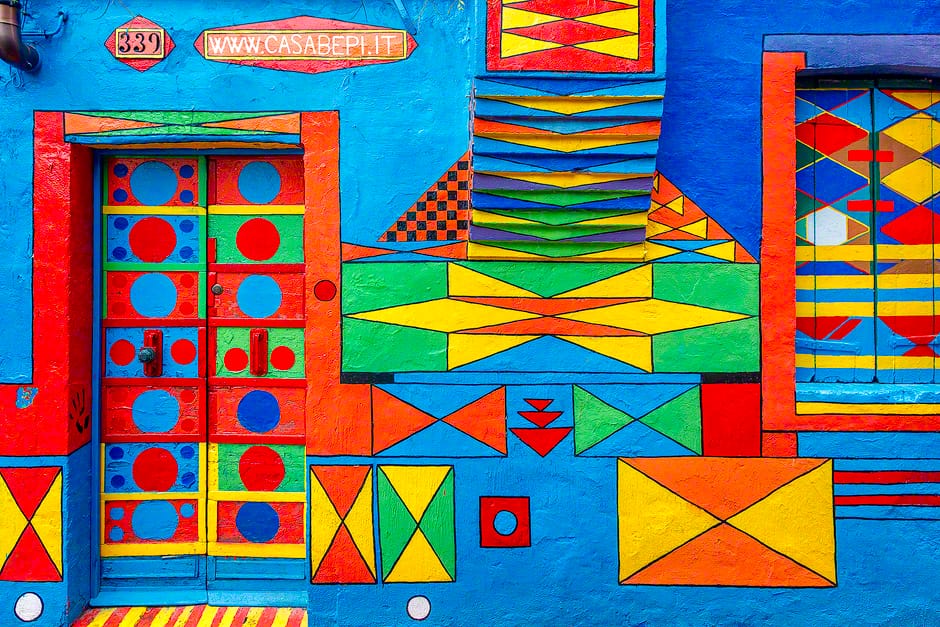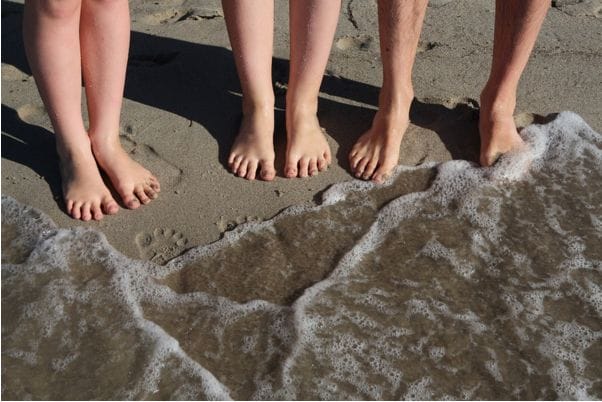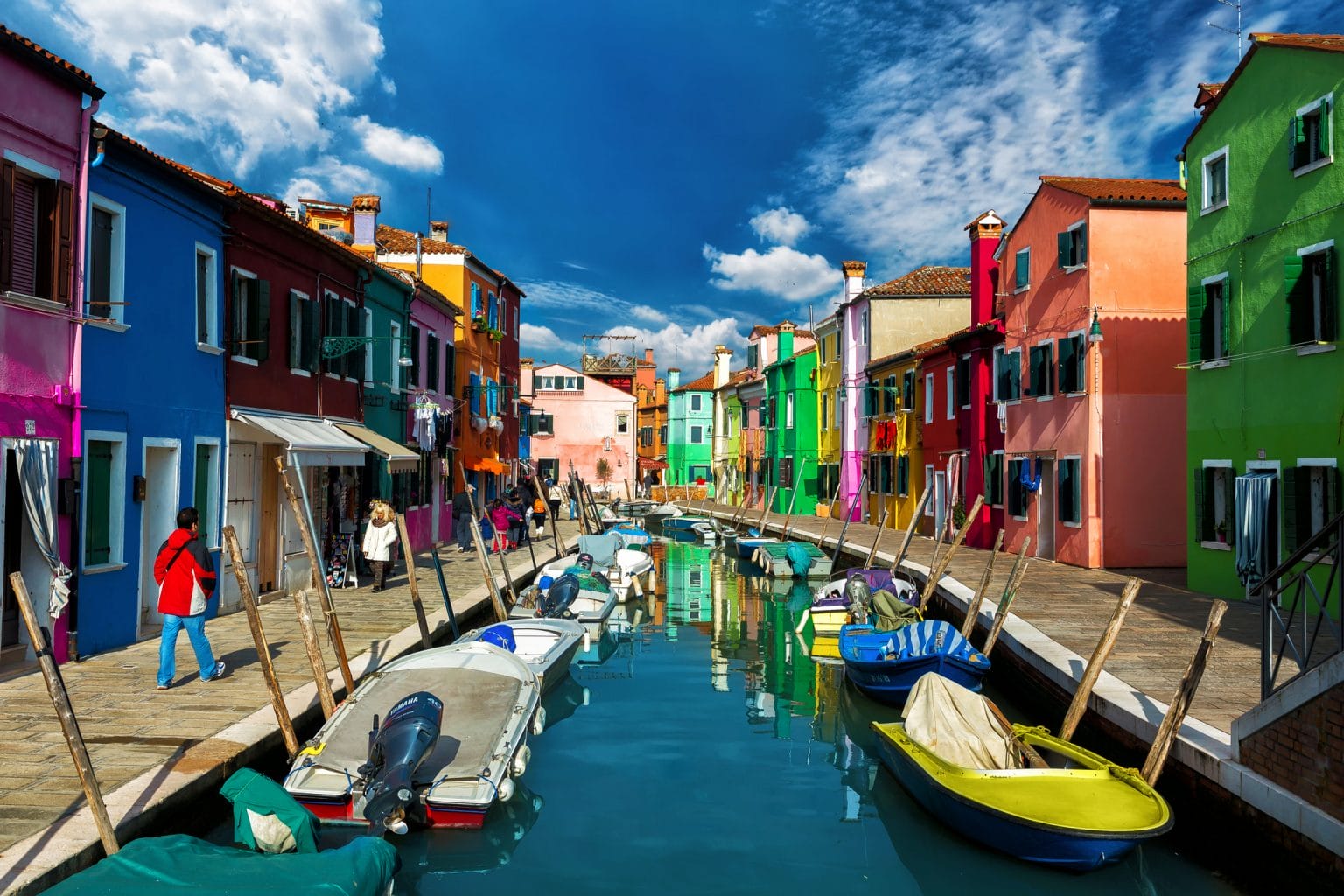The small island of Burano has been deemed one of the ten most colourful places on the planet, and it is the myriad of colours that guarantee visitors a memorable and joyous experience.
Burano is easily reached from Venice by a 45 minute waterbus ride. Soon into your journey you will spy your destination, identifiable by a leaning bell-tower that appears to defy the pull of gravity by sheer willpower.
After disembarking you walk through a tiny park, which is patrolled by a few watchful, half-friendly feral cats. Very quickly you reach the picturesque Via Galuppi, the main street, which is lined by restaurants and shops, many selling lace.
The extravagance of the colour of the buildings is breathtaking. Pulsating reds, vibrant blues, luminous lime greens and radiant yellows are interspersed with calming maroons, subdued ochres and cooling shades of blue. The colour contrasts never jar, perhaps because of a degree of official control. The most reliable evidence suggests that colour was originally used to signify the extent and boundaries of each property, but the myth persists that the colours enabled fishermen to see their houses when far out at sea. And I have even heard it suggested that it was to enable drunken fishermen to find their way home.
Burano’s narrow, turquoise watered canals are straddled by mainly wooden bridges that provide vantage points for enthusiastic photographers.
Via Galuppi leads to the disproportionately spacious Piazza Galuppi, where a market is held on Wednesday mornings. Dominating the piazza is the 16th century church of San Martino, with its leaning bell tower. Although its façade is rather unprepossessing, it houses some important art, including an impressive work by Gian Battista Tiepolo.
The church is closed 12 noon – 3pm.
Across the piazza is the Museo del Merletto – the Lace Museum (closed Mondays). Back in the 16th century Burano lace was the envy of Europe, but the industry declined before reviving in the 1870s. The statue in the piazza is of Baldassarre Galuppi (1706-85) the famous Burano born composer.
 In a tiny square a few metres off the main street you will find ‘La Casa di Bepi Suá’ Burano’s most colourful house (turn left into the Via al Gottolo, by the Bar Caffé Palmisano). Its psychedelic frontage makes the neighbouring houses appear positively restrained. But apart from this attraction, few day visitors seem to venture far from the main thoroughfare. If you do so, you will be immediately plunged into a different, though equally colourful world. The narrow alleyways and small squares are havens of tranquillity, far removed from the trappings of tourism, with just a few residents going about their everyday tasks.
In a tiny square a few metres off the main street you will find ‘La Casa di Bepi Suá’ Burano’s most colourful house (turn left into the Via al Gottolo, by the Bar Caffé Palmisano). Its psychedelic frontage makes the neighbouring houses appear positively restrained. But apart from this attraction, few day visitors seem to venture far from the main thoroughfare. If you do so, you will be immediately plunged into a different, though equally colourful world. The narrow alleyways and small squares are havens of tranquillity, far removed from the trappings of tourism, with just a few residents going about their everyday tasks.
Most visitors are likely to spend a couple of hours or so on Burano. Some choose to extend their stay by crossing the 60m wooden bridge that links Burano to Mazzorbo. A pleasant stroll past orchards and gardens leads to the Romanesque-Gothic church of Santa Caterina. Another option is to take the opportunity to visit the nearby wistful island of Torcello. The journey is short and the boats are regular.
But your abiding memory of Burano will be its myriad of colours and the sense of wellbeing it engenders. The power of colour is summed up by the artist Anna Maria Cimbal. The vividly painted outside wall of her studio, the Yellow Submarine, bears a plaque on which her words are inscribed both in Italian and English – ‘Colour is like music. It uses shorter ways to come to our senses, to awake our emotions’.
Tips
Getting there:
By far the best way to get to Burano from Venice is by waterbus from Fondamente Nuove. Before buying a ticket, though, it is worth considering the options. If you also intend to visit Torcello or Murano it may be more economical to buy a day ticket. But don’t forget to validate your ticket before boarding.
For good value, check out Bar Sport, located to the right at the end of Via Galuppi. A half litre carafe of an acceptable wine is only 5 euros (November 2014).




